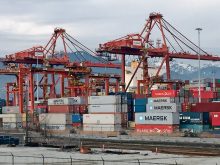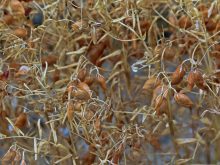Federal statisticians have put their final polish on grain supply numbers for the year.
In most cases, there were only minor adjustments to earlier estimates of how much grain, oilseeds and special crops farmers would grow.
By this stage of the crop year, markets are focused more on demand than on small changes to Canadian supplies.
The higher-than-expected estimate for canola production raised some eyebrows, but it didn’t affect prices.
Canola traders were preoccupied with the impact of soybean price movements at the Chicago Board of Trade, and the European Union’s ban on bonemeal in animal feed.
Read Also

Canadian farmers need level playing field for regulations – says Minister MacDonald
Federal agriculture minister Heath MacDonald is urging the Canadian Food Inspection Agency and the Pest Management Regulatory Agency to speed up their decision making.
But analyst Nolita Clyde of Statcom Ltd. said she thinks the jump in canola supplies will affect the market in the long term.
“It adds to our ending stocks, so it just makes it that much harder to reduce our ending stock levels.”
Statistics Canada pegged total Canadian canola production at 7.118 million tonnes, up from its previous estimate of 6.927 million tonnes, and last year’s production of 8.798 million tonnes.
Clyde said the trade expected production to be near 6.8 to 6.9 million tonnes.
The difference came from average yields of 26.4 bushels per acre, almost a bushel more than previously forecast, she said.
Clyde expects a strong domestic crush and more exports than last year, but the extra production will mean ending stocks of about 1.6 million tonnes.
That’s lower than the two million tonnes Canadian farmers dragged into this crop year from the 1999-00 harvest, but well above the five-year average of 931,000 tonnes, she said. That limits prospects for better canola prices this year, she added.
The report also took another measure of special crops production with a larger-than-usual survey of farmers. The agency last measured production before harvest.
Lentil production dropped from earlier estimates because of lower yields and a smaller seeded area, Agriculture Canada analyst Stan Skrypetz said.
“It makes the lentils look a little bit better, but they’ve still got a pretty big crop.”
The bean harvest shrank too, to 218,000 tonnes from 285,000 tonnes because of excess moisture in Ontario and some regions of Manitoba.














